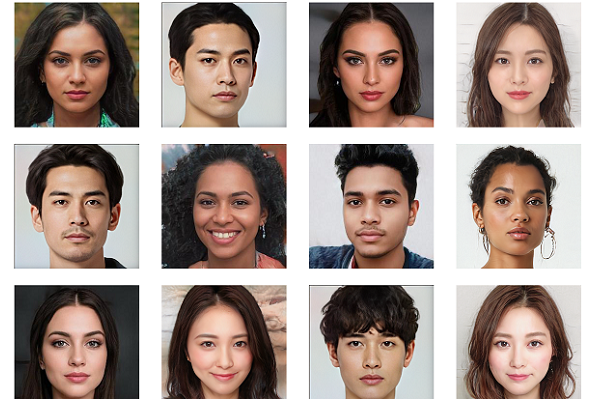Japanese Media Giant Nikkei Debuts Virtual Human Video Platform
 Nikkei Innovation Lab, the research and development arm of Japanese media organization Nikkei, has debuted a platform for producing videos of virtual humans. Nikkei worked with AI tech developer Datagrid to design the video platform, which can produce virtual versions of people to do and say whatever the producers need at the moment.
Nikkei Innovation Lab, the research and development arm of Japanese media organization Nikkei, has debuted a platform for producing videos of virtual humans. Nikkei worked with AI tech developer Datagrid to design the video platform, which can produce virtual versions of people to do and say whatever the producers need at the moment.
Virtual Nikkei
Nikkei described how they want to use the platform for news reports and online event hosting with a far lower cost in time and resources than a standard film shoot requires. Instead of performers, crew, and physical space, a producer can generate the video with existing assets. The virtual human can be based on a real person, mimicked by an AI using prepared video footage and images. The virtual performers can say whatever words are included in an uploaded script. It’s also significantly faster than traditional computer-generated images and videos, according to Datagrid. What once took a week or more can be completed in a single day. For a first test, 160 Nikkei employees agreed to have their faces translated into AI avatars. Nikkei said it plans to apply the tech across its organization, starting with a video published in the Nikkei Online Edition, with a QR code linking to the video a column of the newspaper.
“By combining lip-sync technology, which shapes the lips in a natural way based on inputted voice data, with technology that changes facial expressions, we have succeeded in developing the ability to create realistic videos of virtual people,” Datagrid explained in a press release. “Lip-syncing in multiple languages is possible, regardless of the language in which the voice data is inputted. Our technology enables the deployment of diverse virtual humans of every race, age, gender, and linguistic ability.”
Virtual Performances
The possibilities extend from news to entertainment, even with characters not based on reality. For instance, Cameo hired The Boss Baby to do personalized videos, or at least the character’s AI-powered digital clone. Technical improvements have accelerated the experiments, as did Unreal’s launch of MetaHuman Creator in February. Hour One worked with YouTube star Taryn Southern to make a virtual clone and receptionists for guiding people around buildings. There’s also Nestle Toll House’s virtual human “cookie coach” Ruth and CoCo Hub’s artificial popstars. Just last week, StoryFile released a virtual version of William Shatner able to answer questions about his life story. The power of virtual humans to recreate real people and events or bring imaginary concepts to life is only going to grow, and Nikkei’s early steps may portend the future standard for video news and other information sharing.
Follow @voicebotai Follow @erichschwartz
Cameo Hires Boss Baby’s Virtual Clone and Synthetic Alec Baldwin Voice to Record Personal Messages
Greg Cross Co-founder of Soul Machines on the Rise of Virtual Humans – Voicebot Podcast Ep 230
Samsung May Replace Bixby With a 3D Virtual Assistant Named Sam








